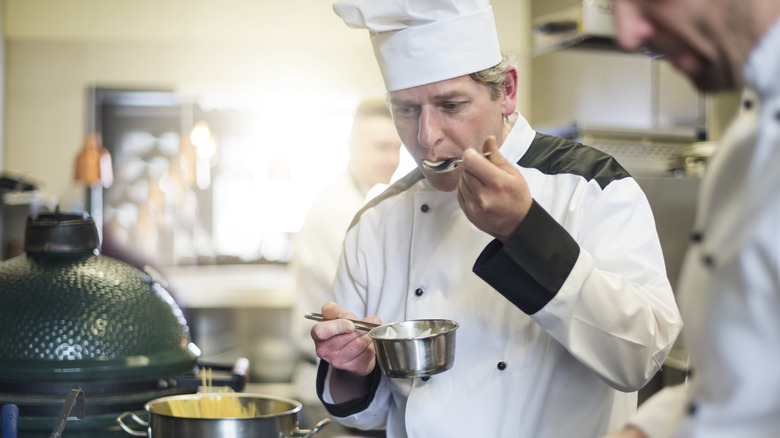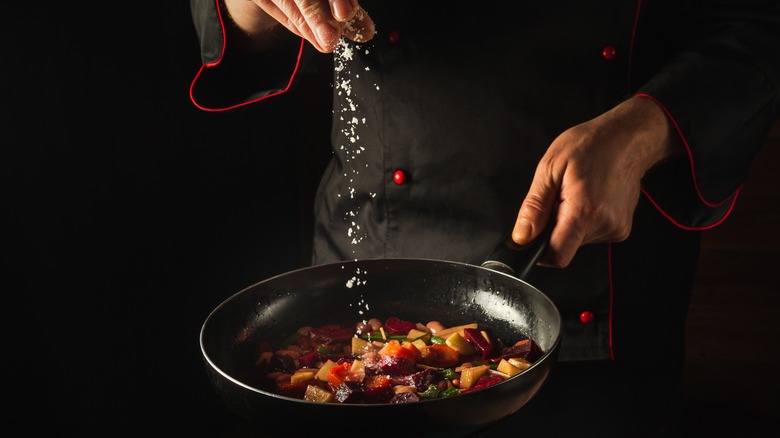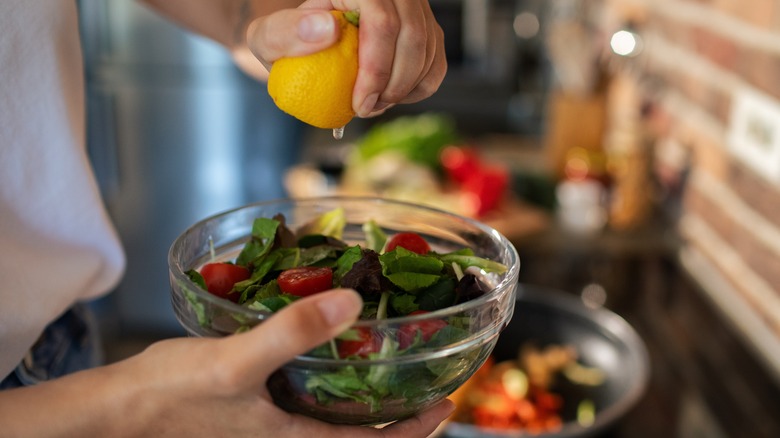Can You Taste Test Your Dish Too Often When Cooking?
Those familiar with cooking competitions on television are no strangers to the phrase, "Taste, taste, taste!" Ignoring this energetic command from chefs running the show has been the downfall of legions of contestants over time, but it also sparks the question: Is it a mistake to taste too much? Who would know better than a professional chef.
CJ Jacobson, chef at Mediterranean restaurant Aba Miami, clued us into how important tasting is when you cook and whether or not there's a line in the sand regarding when you take testing food too far. His advice was simple and to the point: "For tasting food, you can never taste enough." Every incorporation of seasoning changes how a recipe tastes, and you want to experience those changes as you cook.
Although you want to season your proteins and vegetables differently, each needs the appropriate amount of seasoning. Testing food periodically lets you determine how each application of salt or spice changes the dish. Salt specifically can change the outcome of a recipe in a big way depending on whether there is too much or too little added, so tasting "as you go," as Jacobson puts it, is crucial to ending up with a meal you're proud of.
Salt can dramatically change the way recipes taste
The crux of almost any recipe is salt. The mistake of adding too much makes a dish inedible. Not enough, and the accompanying ingredients won't pop like they should. Jacobson says of tasting as you go, "When you do, it's important to see how salt changes what is happening to the ingredient." Tasting what you're cooking as you make it's the only way to know if you've got it just right.
But what kind of salt is best to use? The answer depends on what you're applying it to. Our expert chef says, "Kosher is good for home cooks because you can feel the quantity better. Flake is great to finish and add pops of salinity/flavor."
This falls in line with the type of salt Ina Garten uses in all her recipes. Kosher salt is less salty than table salt, allowing you to integrate it into recipes gradually until it's seasoned to perfection. Flaky varieties, like Maldon and Fleur de sel, gives your food a slightly briny flavor and a welcome crunch that can elevate a dish just before it's served.
Seasoning with acid requires tasting often
While salt is one of the most consequential elements of any recipe, acid follows directly in its footsteps. Chef Jacobson says, "If you are cooking with acid, bearing witness to changes in food is huge." Acid gives life to flavors that need a little help in some recipes. It also offsets the bitterness of other ingredients and can even affect the texture. For example, a splash of vinegar when cooking rice adds the acid that can make your rice fluffier than ever.
Tasting regularly while cooking gives you insight into how acid reacts to the rest of the flavors in a recipe. Jacobson emphasizes this when he says, "It also allows quick evolutionary glimpse into how an ingredient tastes and will taste." Sometimes you want to taste acid in a recipe, like squeezing a lemon over fish. However, other times you're just looking for the acid to counter the bitterness of certain ingredients or coax out the flavor in others. Frequent sampling will tell you how components are blending together, so you can assure everything is going according to plan with your dish, and if a small or large course correction is needed.


